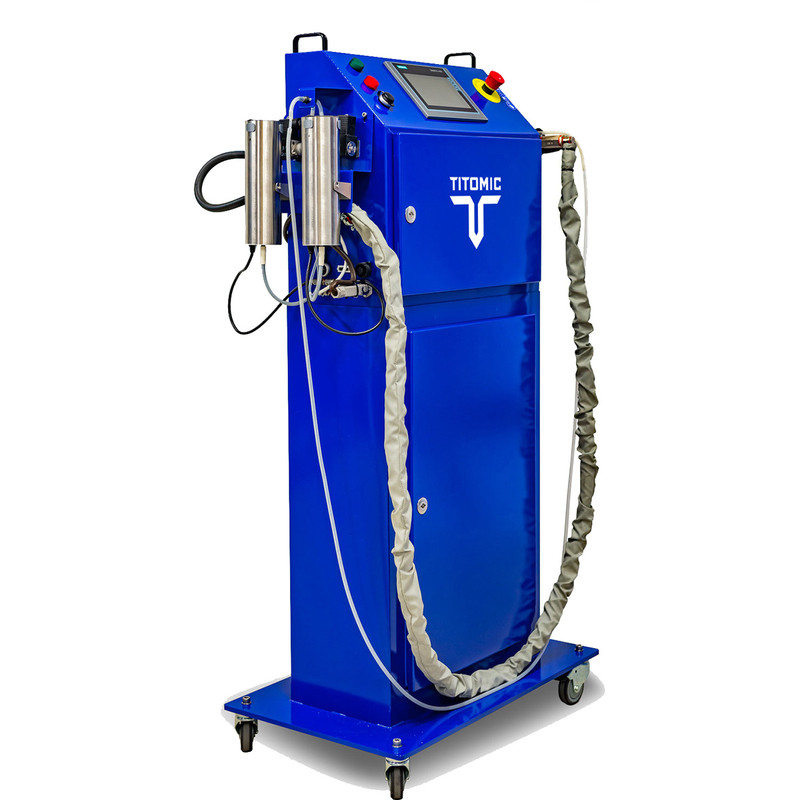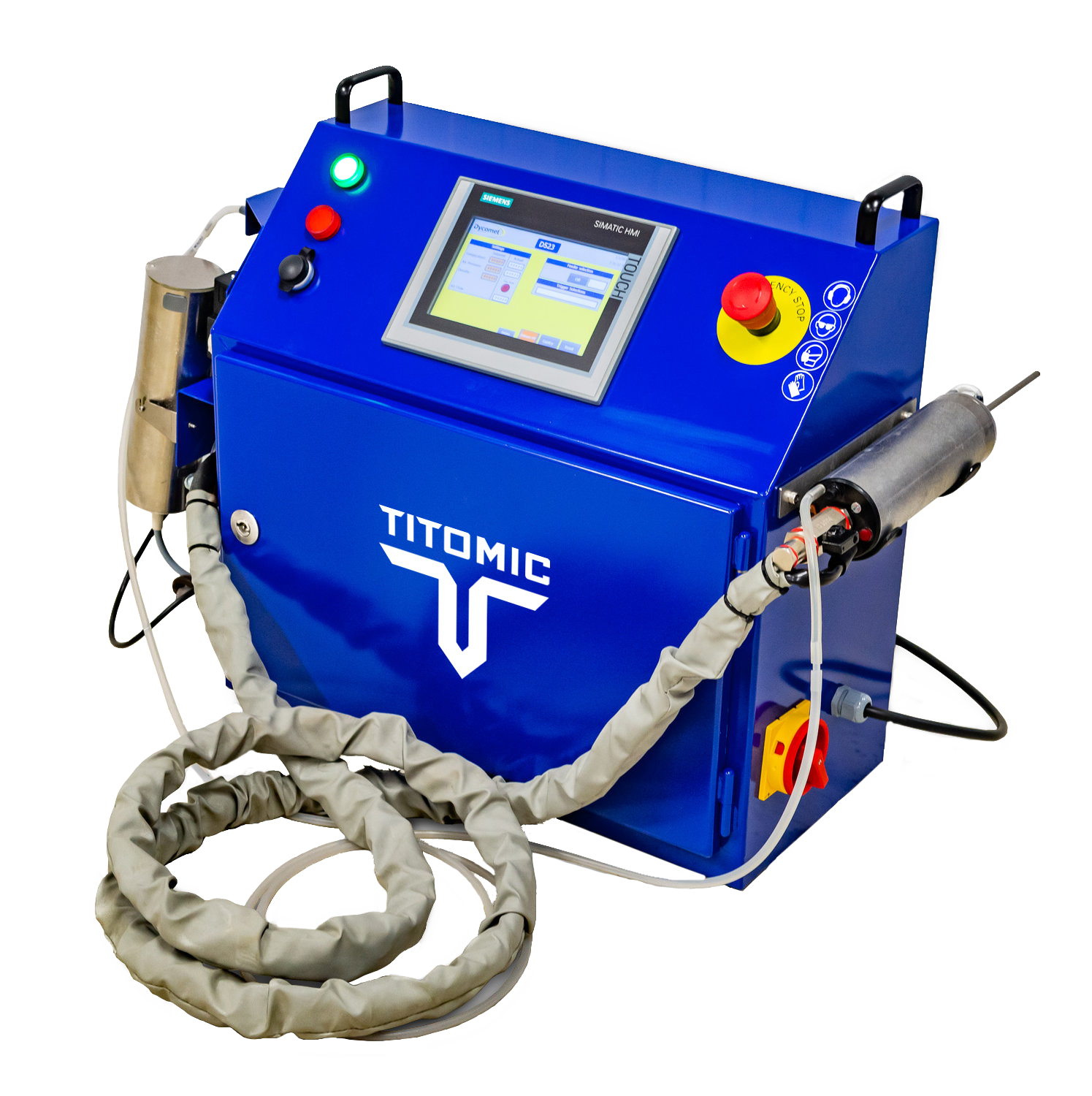Woodside Energy (ASX: WDS) is collaborating with cold spray solution pioneer Titomic (ASX: TTT) to deploy the Titomic D523 System at an offshore gas platform near Karratha, Western Australia. This initiative, marking Titomic’s first significant entry into the oil and gas sector, involves using cold spray technology to address corrosion issues in remote locations, where traditional repair methods can be time-consuming and expensive.
Many oil and gas operations are in remote locations, making it essential to perform repairs without taking apart large sections of equipment. Titomic’s technology is the ideal solution, saving time and money. What’s more, this project represents the first on-site application of cold spray technology in the Australian oil and gas industry. By directly applying corrosion-resistant materials to affected areas, Titomic’s D523 System ensures durable repairs that extend the lifespan of critical infrastructure.
Proven across different sectors, the Titomic D523 System is designed to apply corrosion-resistant materials, such as aluminum, directly onto steel and other metals without heat or extensive disassembly. This technology has already shown its value in challenging environments, such as in field battle damage repair for the Royal Netherlands Army and the aerospace and transport industries. By implementing this technology in situ, Woodside hopes to reduce the need for extensive disassembly and transportation of large equipment, minimizing operational downtime while keeping up with more sustainable and efficient maintenance solutions.
Woodside has engaged Monadelphous to deploy Titomic’s machine to combat corrosion at Woodside’s offshore gas platform in the Indian Ocean. A renowned Australian engineering firm with a reputation for tackling some of the country’s most challenging projects, Monadelphous has worked on the Gorgon Project, one of the world’s largest natural gas developments, and the Olympic Dam, a major mining site with copper, uranium, and gold deposits.
“We are thrilled to see our technology being recognized and implemented by industry leaders like Woodside Energy and Monadelphous. This partnership not only validates the effectiveness of our cold spray solutions but also opens the door to further opportunities in the oil and gas sector,” expressed Titomic Managing Director, Herbert Koeck. “Having two companies of this repute as the first oil and gas sector users of our product places us in a commanding position to capitalize on the opportunities this industry could bring to Titomic. We look forward to a productive collaboration that will showcase the long-term benefits of our innovative technology to the world.”
In fact, research by the Woodside FutureLab at Monash University has already identified new applications for Titomic’s cold spray process, particularly for corrosion repair and prevention.
The lease agreement for the D523 System is expected to generate at least AU$ 50,000 ($33,425) in revenue for Titomic over the next 12 months. While this initial amount might not seem significant on its own, the successful implementation of cold spray technology in a challenging environment like an offshore gas platform could prove how useful this technology can be and lead to broader adoption and more revenue potential in the future.
Founded in 1954, Woodside Energy is one of the world’s largest independent oil and gas companies. Operating primarily in Australia, Woodside has been known to invest in renewable energy sources and technologies to reduce its carbon footprint. In recent years, Woodside has also been involved in several 3D printing projects, like installing a 3D printed valve on its Goodwyn A platform. Some years ago, it also partnered with the now-extinct metal 3D printing service provider 3D Metalforge to produce parts locally.
The deployment of Titomic’s D523 System by Woodside and Monadelphous marks a significant milestone for cold spray technology in the oil and gas industry. As more companies recognize the benefits of on-site, heat-free repairs and corrosion prevention, the demand for this type of solution will likely grow. This partnership demonstrates that additive manufacturing continues to expand into new applications. We have seen this technology increasingly adopted across more and more industries, and now the oil and gas sector is becoming a promising market for AM.
Subscribe to Our Email Newsletter
Stay up-to-date on all the latest news from the 3D printing industry and receive information and offers from third party vendors.
Print Services
Upload your 3D Models and get them printed quickly and efficiently.
You May Also Like
3D Printing Predictions 2026: Industrial Production in Metal Additive Manufacturing
The industrial metal additive manufacturing world is splitting, with commoditization and lower-cost parts driving the production of millions of components for consumer electronics, machinery, dental, and beyond. Meanwhile, large parts...
Inside Xometry’s 2026 Outlook: Why AM Is Becoming Essential — and What’s Still Holding It Back
In the first part of this series, we spoke with Xometry’s Senior Vice President of Marketplace Operations, Mike Cavalieri, about how manufacturers are reshoring, diversifying their suppliers, and building more...
Top 10 Moonshot Ideas for 3D Printing’s Future
As the year comes to a close, it’s clear that additive manufacturing (AM) is entering a new phase. Costs are falling, supply chains are changing, government spending is rising, and...
3D Printing Predictions for 2026: Scaling AM Through Software
For several years, we have seen additive manufacturing software play a more central role in our industry. LPBF machines achieve higher yields and can produce thinner-walled parts thanks to the...































